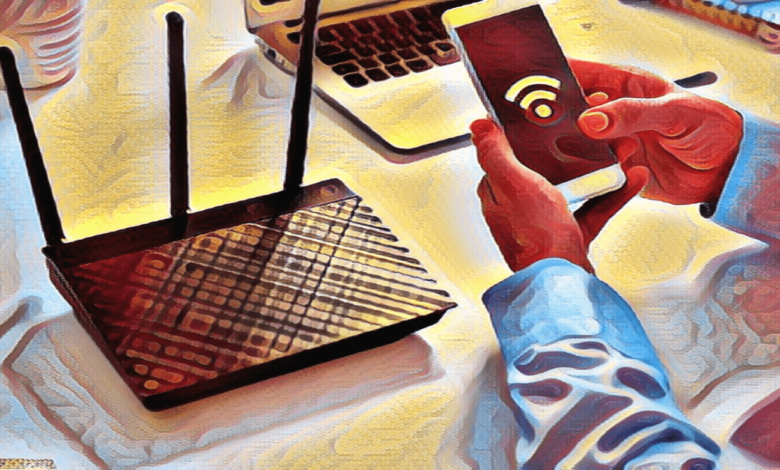Unlocking Seamless Connectivity: WiFi Solutions for Home Networks

Unlocking Seamless Connectivity: WiFi Solutions for Home Networks – In today’s digital age, having seamless connectivity is crucial for a smooth and efficient home network experience. Whether you’re streaming your favorite movies, conducting virtual meetings, or gaming online, a reliable WiFi connection is essential. But what exactly does seamless connectivity entail?
Seamless connectivity refers to the ability to stay connected to the internet consistently and without interruption across all areas of your home. It’s about eliminating dead zones, reducing latency, and ensuring that every device in your network receives a strong and stable signal. This level of connectivity is indispensable for maximizing productivity, entertainment, and communication within the household.
Challenges in Traditional WiFi Networks
Traditional WiFi networks often face several challenges that can hinder the overall connectivity experience. Bandwidth limitations, interference issues, and dead zones are among the most common obstacles encountered by users.
Bandwidth limitations restrict the amount of data that can be transmitted over a network, leading to slower speeds and congestion during peak usage times. Interference issues arise from neighboring WiFi networks, household appliances, and physical obstructions, causing signal degradation and fluctuations in performance. Dead zones are areas within the home where the WiFi signal is weak or non-existent, resulting in dropped connections and frustration for users.
Understanding WiFi Solutions
To address these challenges, various WiFi solutions have been developed to enhance home network connectivity. Mesh WiFi systems, WiFi extenders, and powerline adapters are among the most popular options available.
Mesh WiFi systems consist of multiple nodes or access points placed strategically throughout the home to create a seamless network environment. These systems work together to ensure blanket coverage and deliver consistent speeds to every corner of the house. WiFi extenders, also known as repeaters or boosters, amplify the existing WiFi signal to extend its reach to areas with poor coverage. Powerline adapters utilize the home’s electrical wiring to transmit data signals, providing an alternative solution for areas where traditional WiFi signals cannot penetrate.
Advantages of Upgrading Home Networks
Upgrading your home network with advanced WiFi solutions offers numerous benefits that can significantly improve your online experience. Enhanced coverage ensures that every room in your home receives a strong and stable WiFi signal, eliminating dead zones and providing uninterrupted connectivity. Improved speed and stability result in faster downloads, smoother streaming, and reduced latency for online gaming and video conferencing. Additionally, WiFi solutions are designed to support multiple devices simultaneously, allowing you to connect smartphones, laptops, smart TVs, and other gadgets without sacrificing performance.
Choosing the Right WiFi Solution
When it comes to selecting the right WiFi solution for your home, it’s essential to assess your specific requirements and consider factors such as the size of your property, the number of connected devices, and the layout of your living space. Conducting thorough research and comparing different WiFi solutions can help you make an informed decision that meets your needs and budget.
Installation and Setup Process
Once you’ve chosen a WiFi solution, the installation and setup process may vary depending on the type of system you’ve selected. Setting up a mesh WiFi system typically involves connecting the primary router to your modem and strategically placing additional nodes throughout your home. WiFi extenders can be plugged into electrical outlets and configured to extend the existing WiFi network, while powerline adapters require connecting one adapter to your router and another to a power outlet near the desired location.
Tips for Optimal Performance
To ensure optimal performance and reliability, consider implementing the following tips:
- Placement of routers and nodes: Position routers and nodes in central locations away from obstructions for maximum coverage.
- Regular firmware updates: Keep your WiFi devices up to date with the latest firmware to address security vulnerabilities and improve performance.
- Network security measures: Enable encryption, change default passwords, and set up firewalls to protect your home network from unauthorized access.
Future Trends in Home Connectivity
The future of home connectivity is filled with exciting possibilities, including the integration of IoT devices, the widespread adoption of 5G technology, and advancements in wireless communication protocols. As smart home technology continues to evolve, homeowners can expect to see even greater levels of automation, convenience, and connectivity in their daily lives.
Case Studies: Successful Implementations
Real-life examples of successful home network upgrades can provide valuable insights and inspiration for homeowners looking to enhance their connectivity. Whether it’s a large family home, a multi-story apartment building, or a small studio apartment, WiFi solutions have the potential to transform the way we live, work, and play.
Cost Considerations and Budgeting
While investing in WiFi solutions may require an initial financial outlay, the long-term benefits far outweigh the costs. By prioritizing your home network infrastructure, you can enjoy reliable connectivity, increased productivity, and improved quality of life for years to come. Consider exploring cost-effective options and budgeting accordingly to ensure that you get the most value out of your investment.
Common Mistakes to Avoid
When upgrading your home network, be sure to avoid the following common mistakes:
- Overlooking network security: Neglecting to secure your WiFi network leaves it vulnerable to cyber threats and unauthorized access.
- Neglecting regular maintenance: Failing to perform routine maintenance tasks such as updating firmware and troubleshooting connectivity issues can lead to performance degradation over time.
Expert Recommendations
Industry professionals recommend prioritizing reliability, scalability, and security when selecting WiFi solutions for your home. By investing in reputable brands and consulting with experienced professionals, you can ensure that your home network meets your current and future needs.
Customer Reviews and Testimonials
Don’t just take our word for it—hear what our satisfied customers have to say about their upgraded home networks:
- “Since installing a mesh WiFi system, I’ve noticed a significant improvement in signal strength and reliability throughout my home.”
- “WiFi extenders have transformed my home office into a productive workspace with fast and stable internet connectivity.”
- “Powerline adapters have been a game-changer for streaming movies and playing online games in areas where WiFi signals were previously weak.”
Conclusion
In conclusion, unlocking seamless connectivity with advanced WiFi solutions is essential for maximizing productivity, entertainment, and communication within the household. By investing in reliable and scalable WiFi infrastructure, homeowners can enjoy faster speeds, wider coverage, and greater stability for all their connected devices. Don’t let bandwidth limitations, interference issues, or dead zones hold you back—upgrade your home network today and experience the difference firsthand.
FAQs
- What is the difference between a mesh WiFi system and a WiFi extender?
- Mesh WiFi systems consist of multiple nodes that work together to create a single, seamless network, while WiFi extenders simply amplify the existing WiFi signal to extend its reach to areas with poor coverage.
- Can I install WiFi solutions myself, or do I need professional assistance?
- Many WiFi solutions are designed for easy installation and setup, but professional assistance may be necessary for more complex systems or large-scale deployments.
- Are there any limitations to the number of devices that can be connected to a WiFi network?
- While WiFi networks have theoretical limits on the number of connected devices, practical limitations may vary depending on factors such as network congestion and bandwidth usage.
- How often should I update my router’s firmware for optimal performance?
- It’s recommended to check for firmware updates regularly and install them as soon as they become available to ensure optimal performance and security.
- Will upgrading my home network increase my internet speed?
- Upgrading your home network can improve internet speed and stability, but actual performance may vary depending on factors such as your internet service provider, network configuration, and device capabilities.
